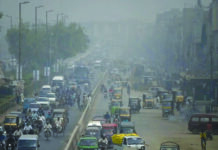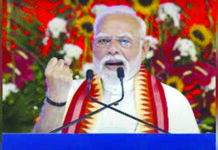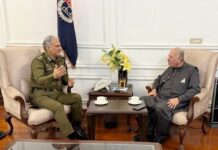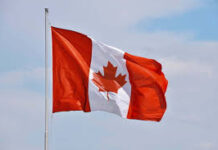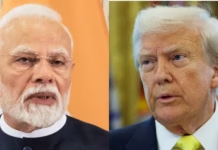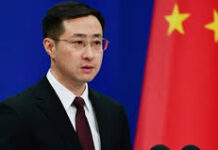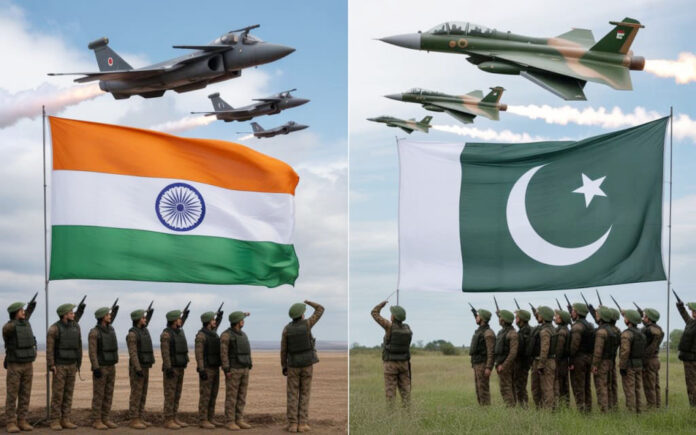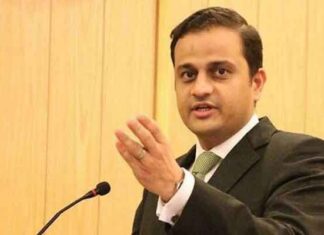Nearly three months have passed since the conflict between India and Pakistan in May 2025. The feat performed by the PAF is hard to ignore for the international community and too big for the Indian leadership to digest.
While internally, the Pakistan military received huge support and admiration from the civil leadership and the general public, the Modi administration is mainly concerned about the foreign policy of Pakistan. At a time when Pakistan is enjoying strengthened relations with the two big powers, China and the USA, India, however, is being isolated by its so-called military partner and ally, the USA.
Historically, India perceives China as a threat to its regional hegemonic ambitions, hence the unfriendliness between the two sides is understandable. On the contrary, in the past two and a half decades, New Delhi has maintained a balanced foreign policy towards Russia and the USA. The previous US administrations, particularly the Biden Administration, ignored India’s military partnership with Russia despite the ongoing Ukraine war. Moreover, India is part of the QUAD agreement and, at the same time, an original member of the BRICS organisation, something which is contradictory in nature.
As India seeks a way out of this chaos, the fate of its economic and political stability is uncertain. There is a concept called imperial overstretch, which refers to a situation where a great power extends itself beyond its ability to maintain or sustain its military, economic, or political commitments. As a result, it becomes vulnerable to decline or collapse. India is facing a similar issue today. The Modi administration is caught at a crossroads, confused and puzzled; address criticism at home or fight the diplomatic war? It is indeed a testing point for India
Though India’s military cooperation with Russia dates back to the Cold War era, in 2021, New Delhi signed a deal with Moscow which aimed to strengthen military cooperation in research and development, production, and after-sales support of armaments and military equipment. Likewise, the bilateral projects include the supply of the S-400 air defence system, MiG-29 aircraft, Kamov helicopters, the INS Vikramaditya aircraft carrier, and production of T-90 tanks, Su-30 multirole fighter aircraft, Ak-203 rifles, and BrahMos missiles in India. Apart from that, India conducts joint exercises and annual meetings with Russia to review the ongoing projects.
As a consequence, Trump is punishing India heavily, first, for buying Russia’s military equipment as it decreases the effectiveness of the US economic sanctions against Russia. Secondly, for keeping hypocritical behaviour towards the USA by actively participating in the BRICS meetings, since BRICS is widely seen as a move towards de-dollarisation. Trump is known for his transactional relationship under the notion “Make America Great Again,” which means doing everything possible to benefit the USA, a characteristic which is apparently miscalculated by the Modi administration.
While India faces diplomatic isolation post-May conflict, recently, on the Truth Social platform, Trump announced heavier tariffs (i.e., 25 platform) on Indian goods with unspecified additional penalty for buying Russian oil and weapons “at a time when everyone wants Russia to STOP THE KILLING IN UKRAINE,” adding that the penalty will start from 1st August.
While India is fighting a desperate diplomatic war abroad, its government is also facing a severe challenge at home; however, it is losing both domestically and internationally. The Indian National Congress, the opposition party in Lok Sabha (lower house of the Indian parliament), is driving the incumbent government crazy. The opposition leader, Rahul Gandhi, is making strict demands of the Modi administration: proof of Pakistan’s involvement in the Pahalgam incident, effectiveness of Operation Sindoor (which is continuing), and the role of the USA in mediation between India and Pakistan.
Though Pakistan offered a hand for a joint investigation into the Pahalgam incident, the BJP leaders chose a hard path, and are still paying the price for it. The same miscalculation was ade in 2019 in response to the Pulwama attack. India faced huge humiliation in the face of the world, but all in vain, as the Modi administration did not learn lessons.
In the past, India has partially maintained an independent foreign policy; however, in a parliamentary session when asked about the government’s stance on the US role in ending the May conflict, the External Affairs Minister, S. Jaishankar, responded by shedding light on historical events, stating that in 1962, the Congress party leader “Pandit Nehru wrote letters to the then US President John F. Kennedy” to intervene and help India against China.
On China’s increased collaboration with Pakistan, the EAM remarked that this closeness is not a recent phenomenon, but rather dates back to the era between the 1960s and 2000s, adding that the Congress leadership left this gap, and “we are aware of it and dealing with it.”
As India seeks a way out of this chaos, the fate of its economic and political stability is uncertain. There is a concept called imperial overstretch, which refers to a situation where a great power extends itself beyond its ability to maintain or sustain its military, economic, or political commitments. As a result, it becomes vulnerable to decline or collapse. India is facing a similar issue today. The Modi administration is caught at a crossroads, confused and puzzled; address criticism at home or fight the diplomatic war? It is indeed a testing point for India!

